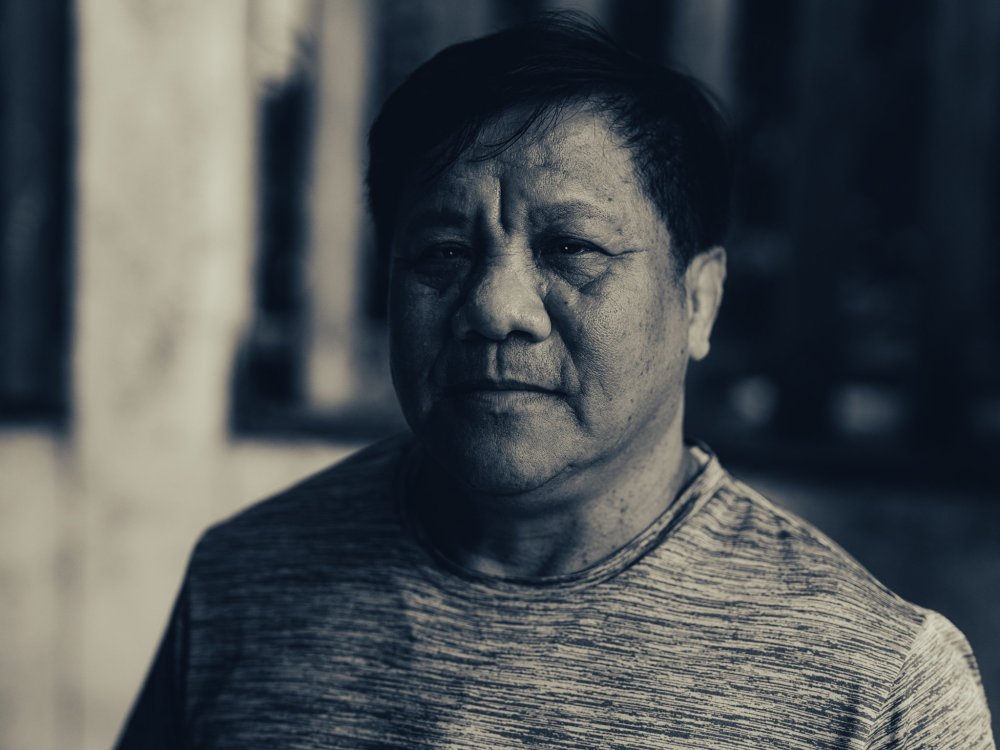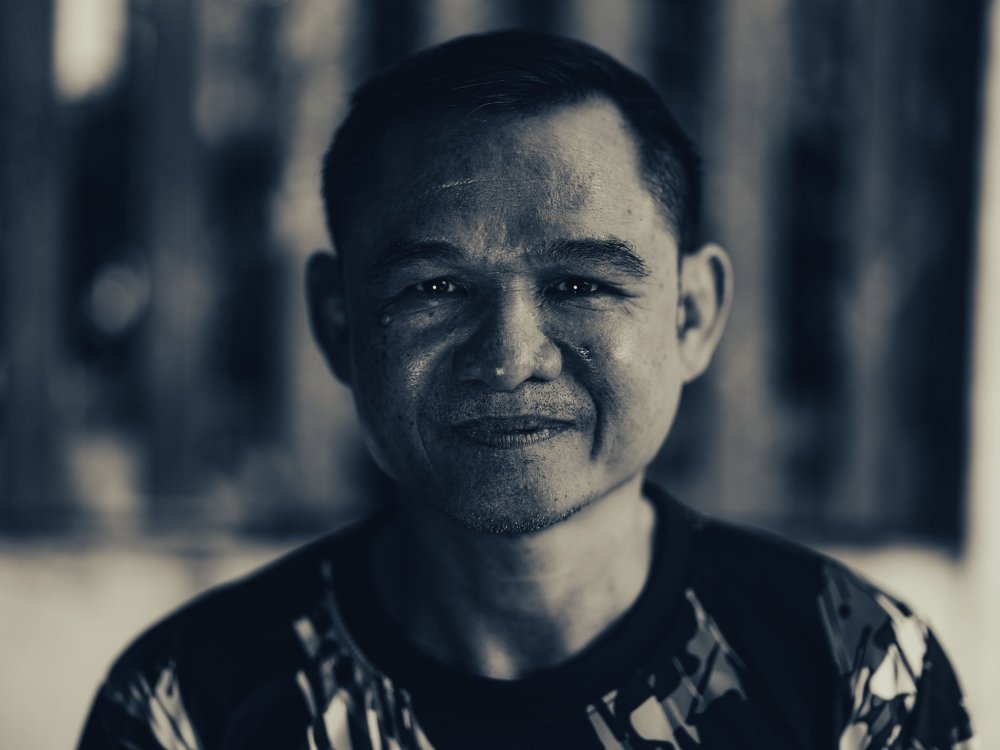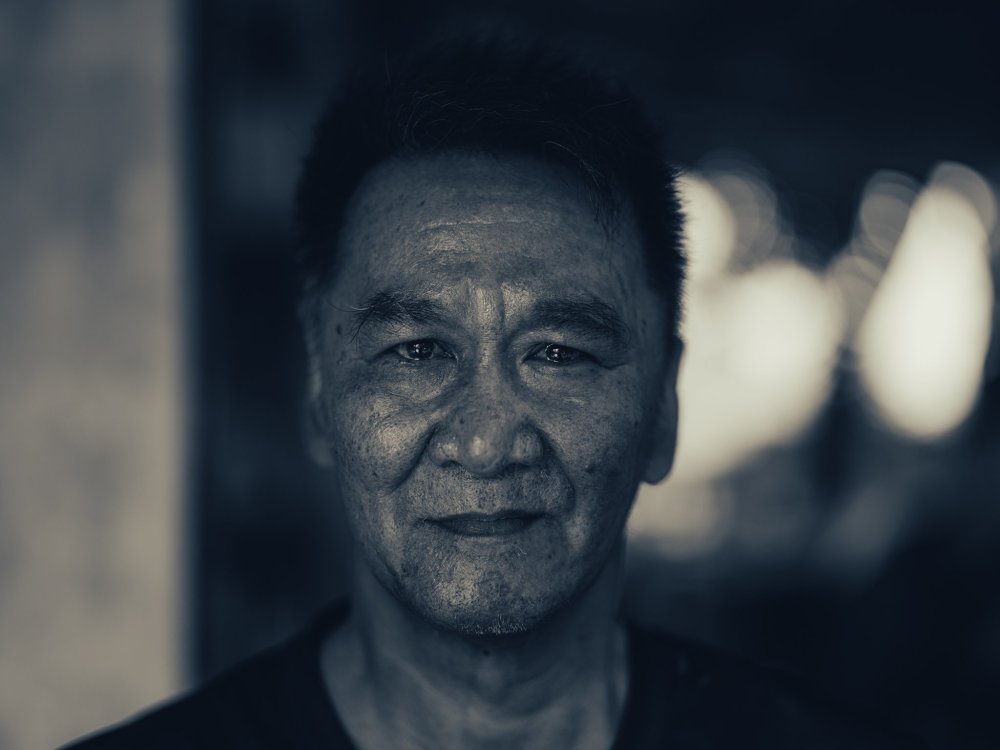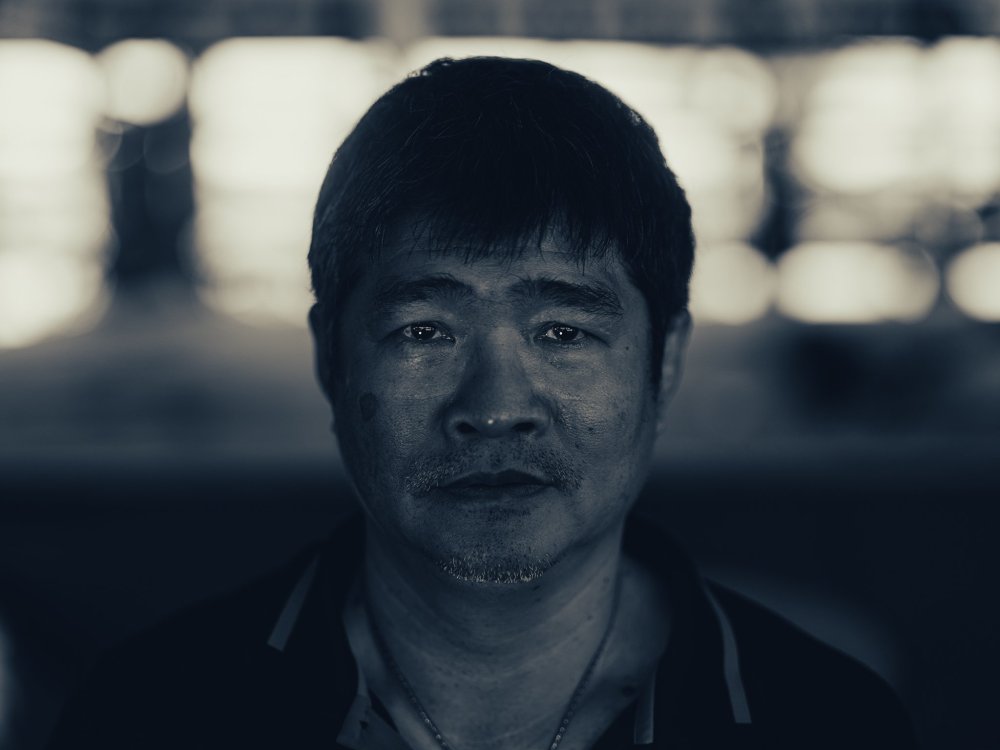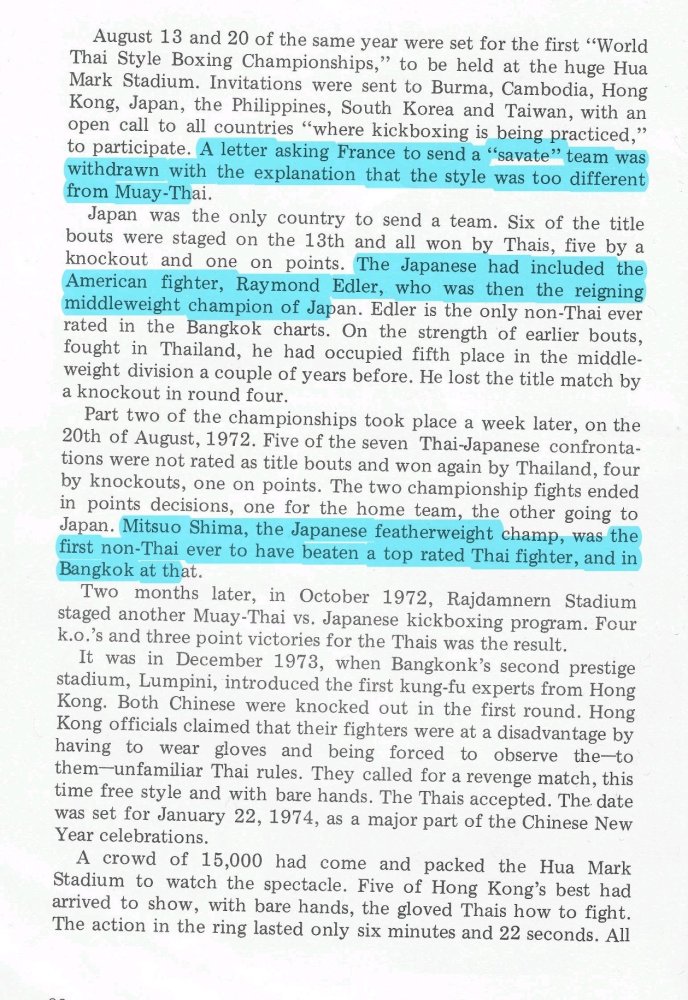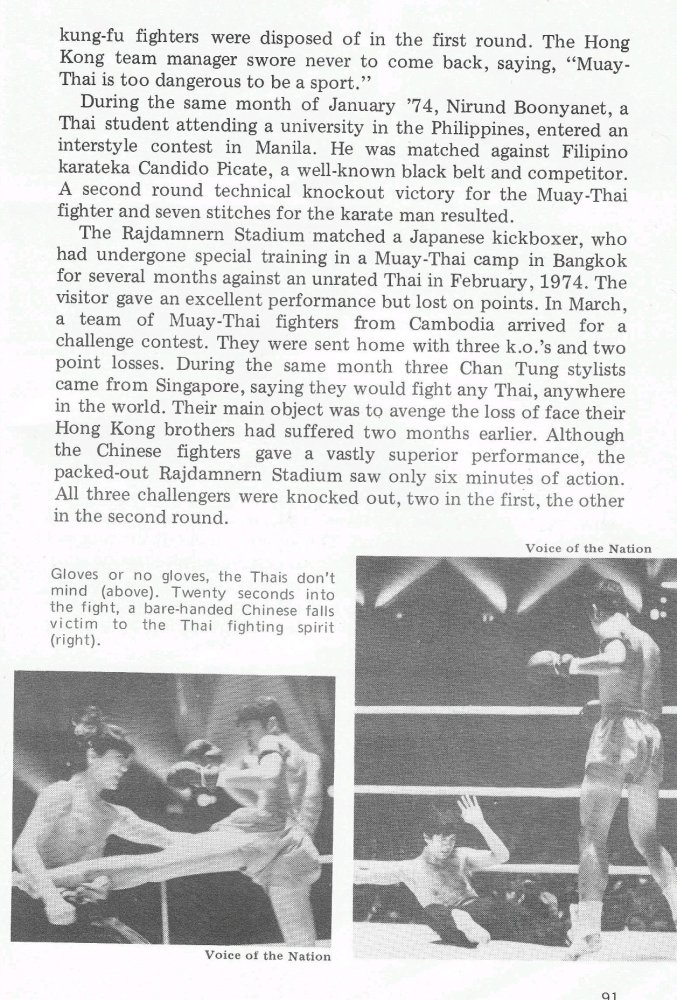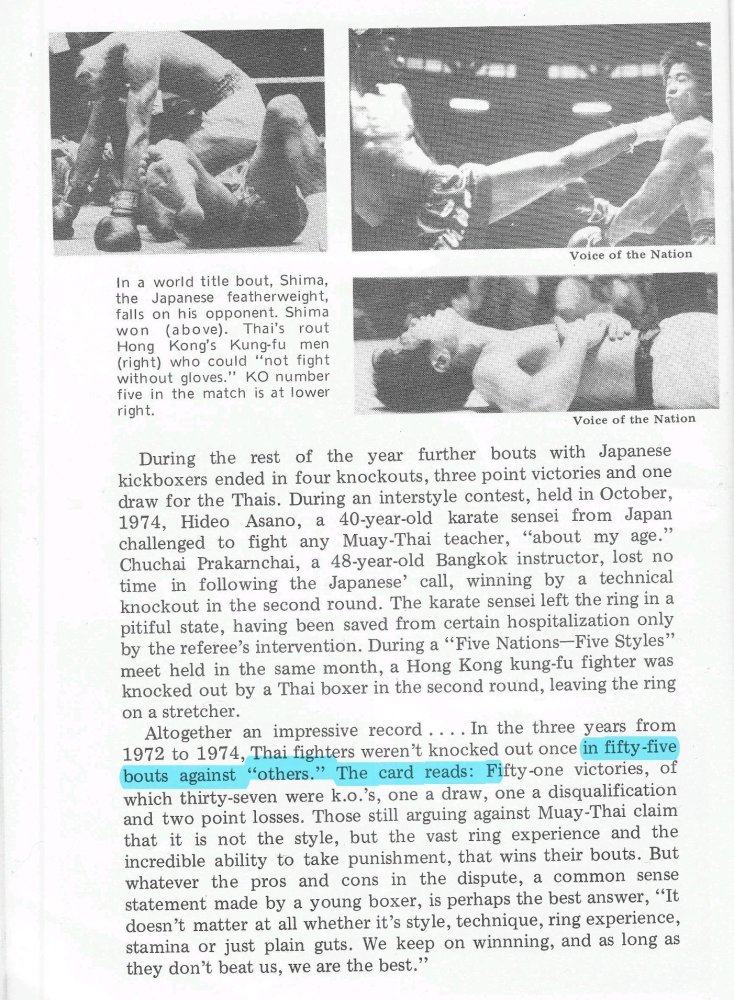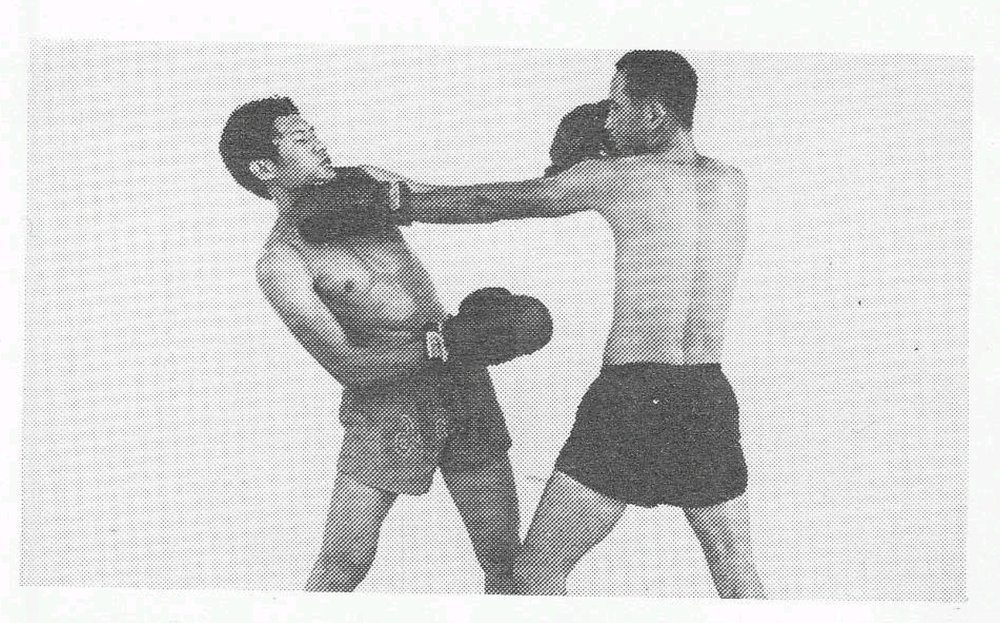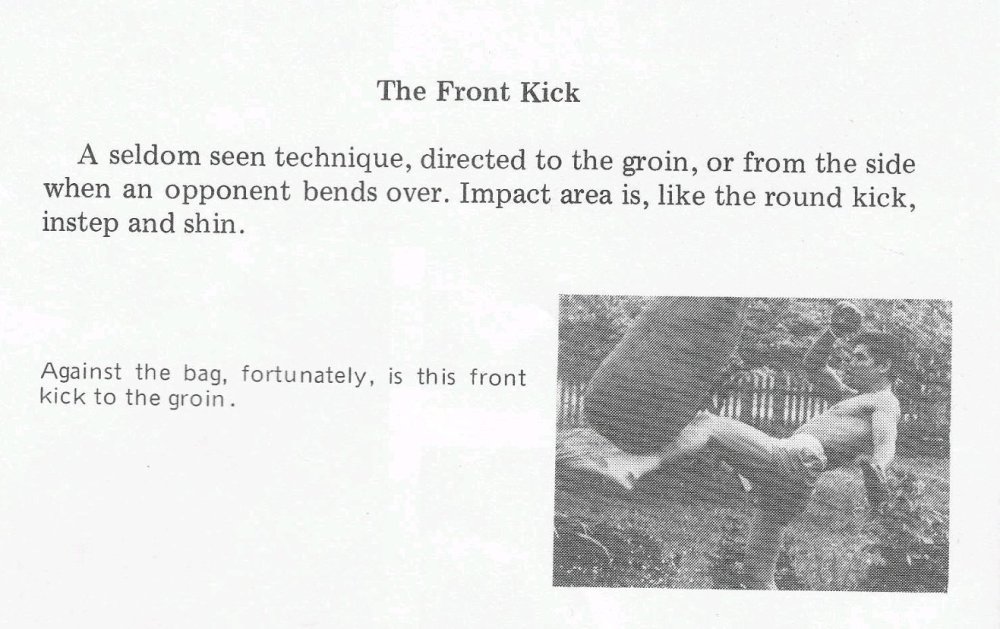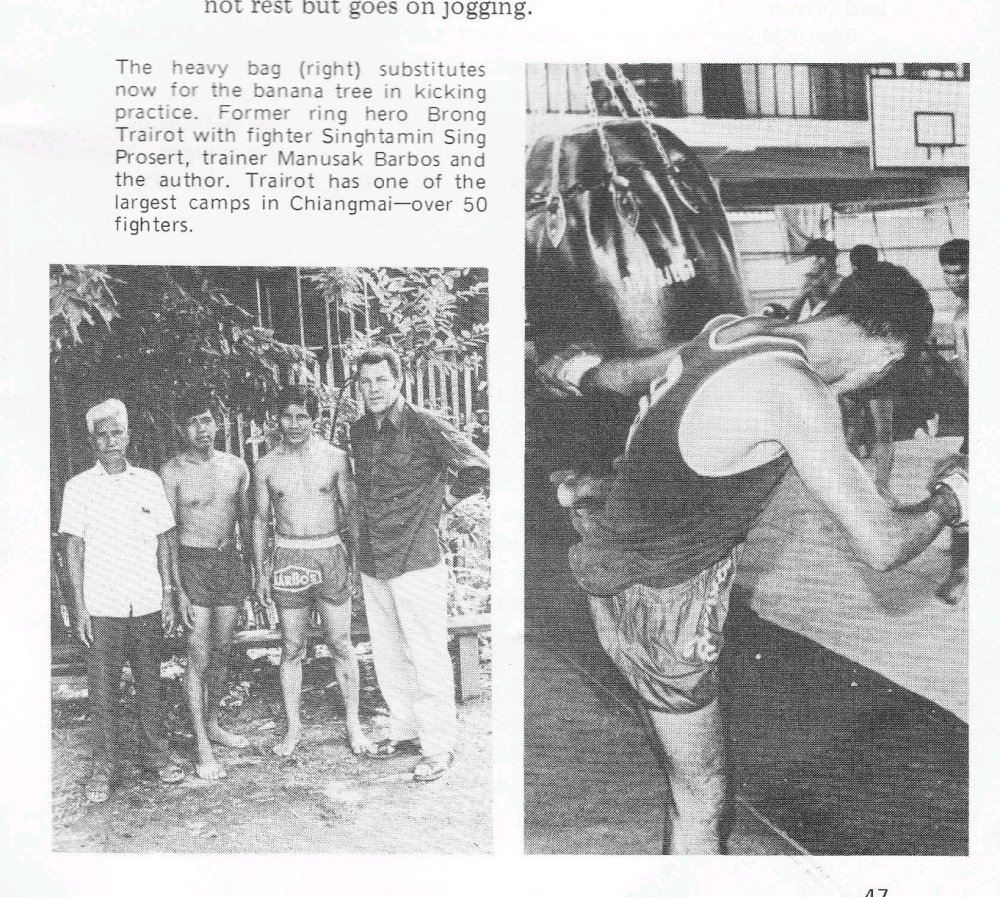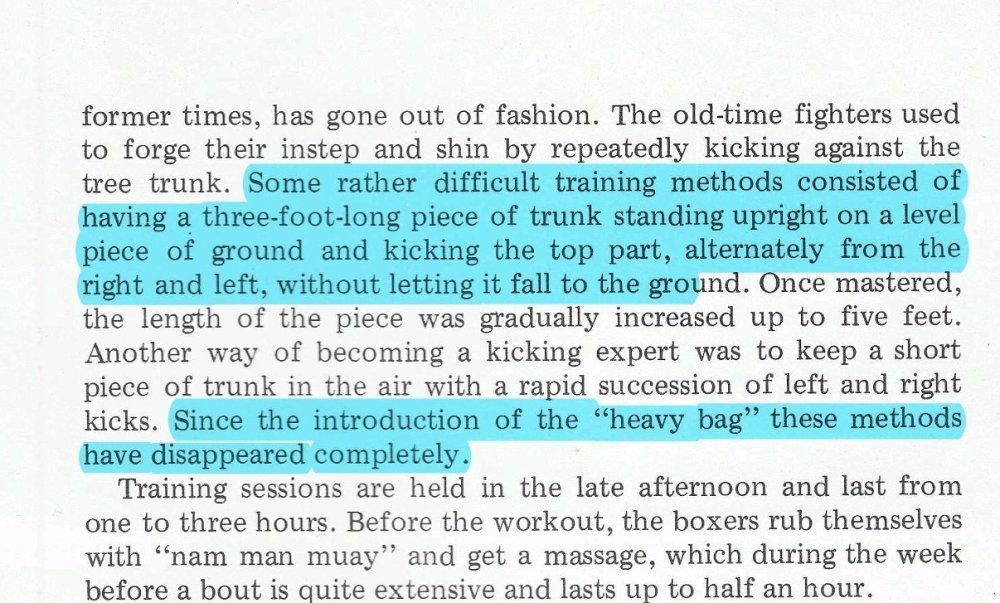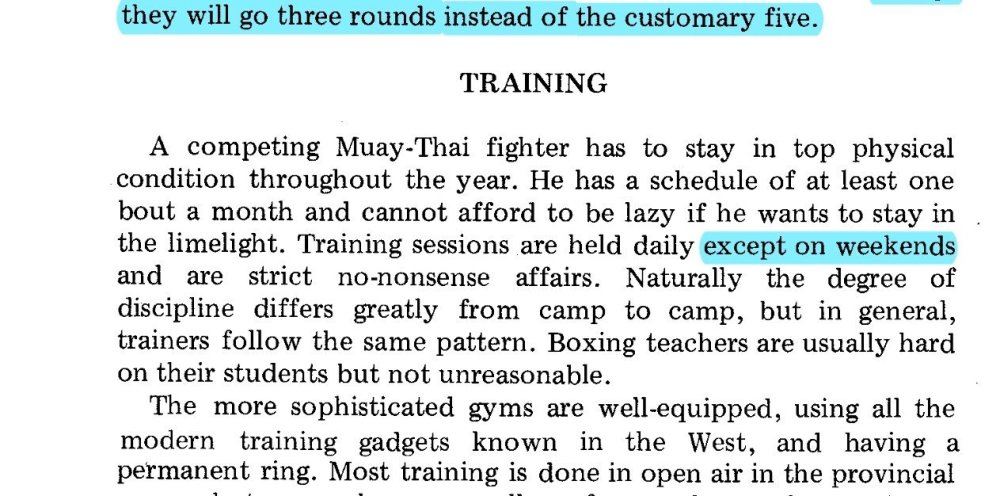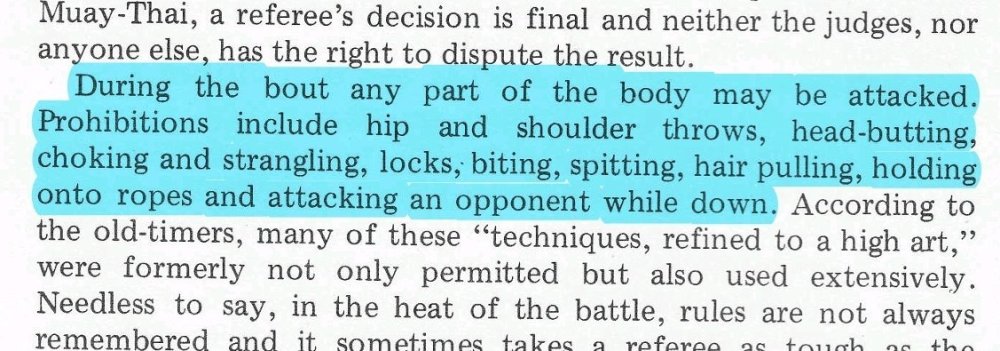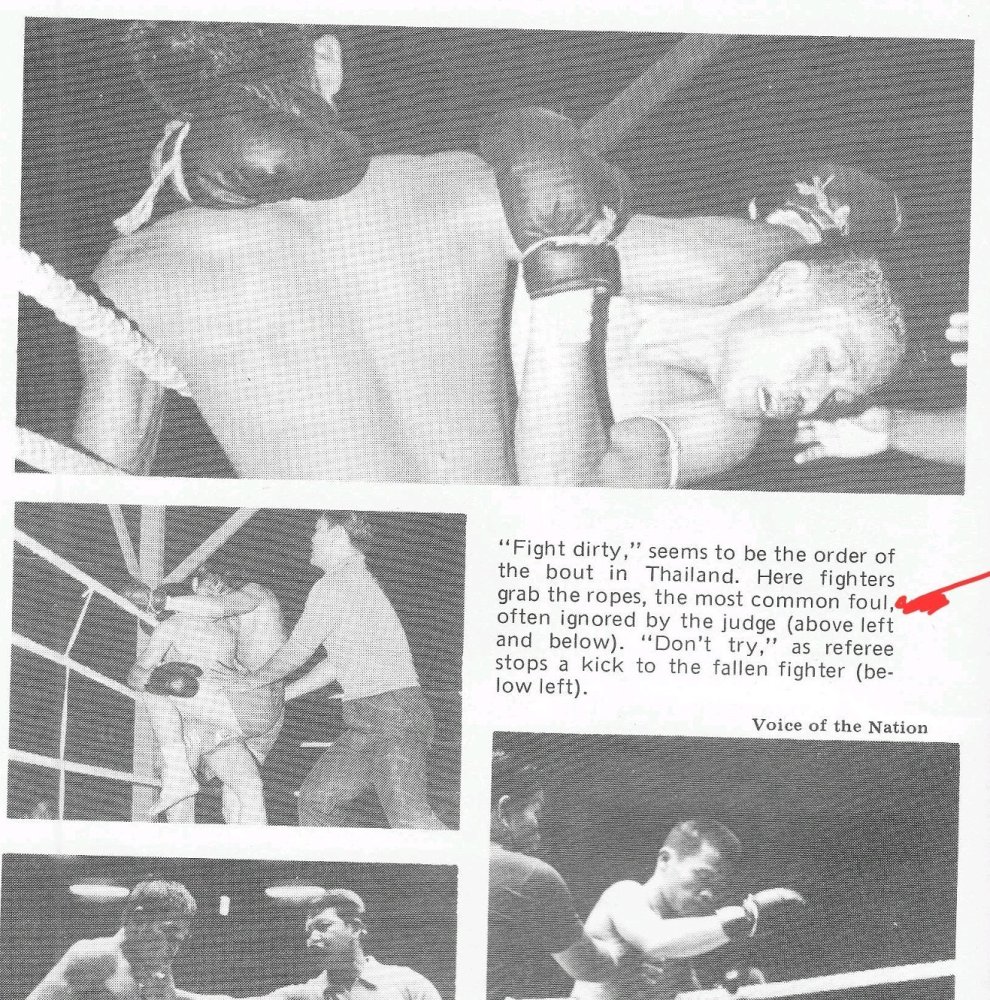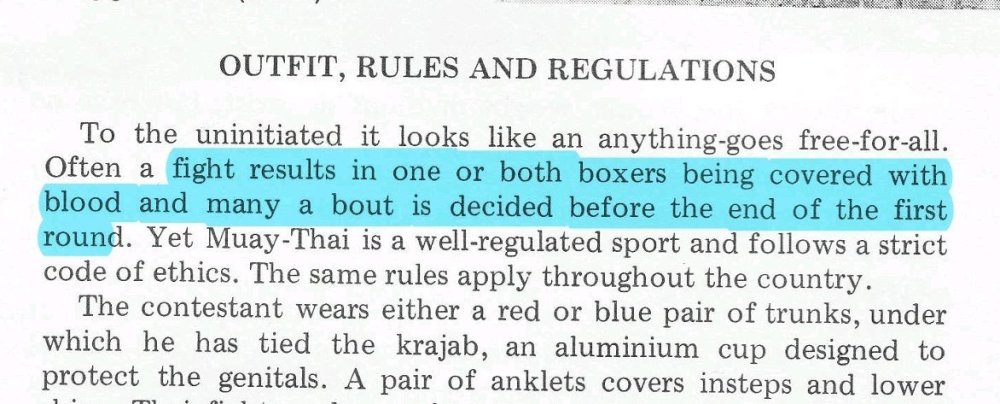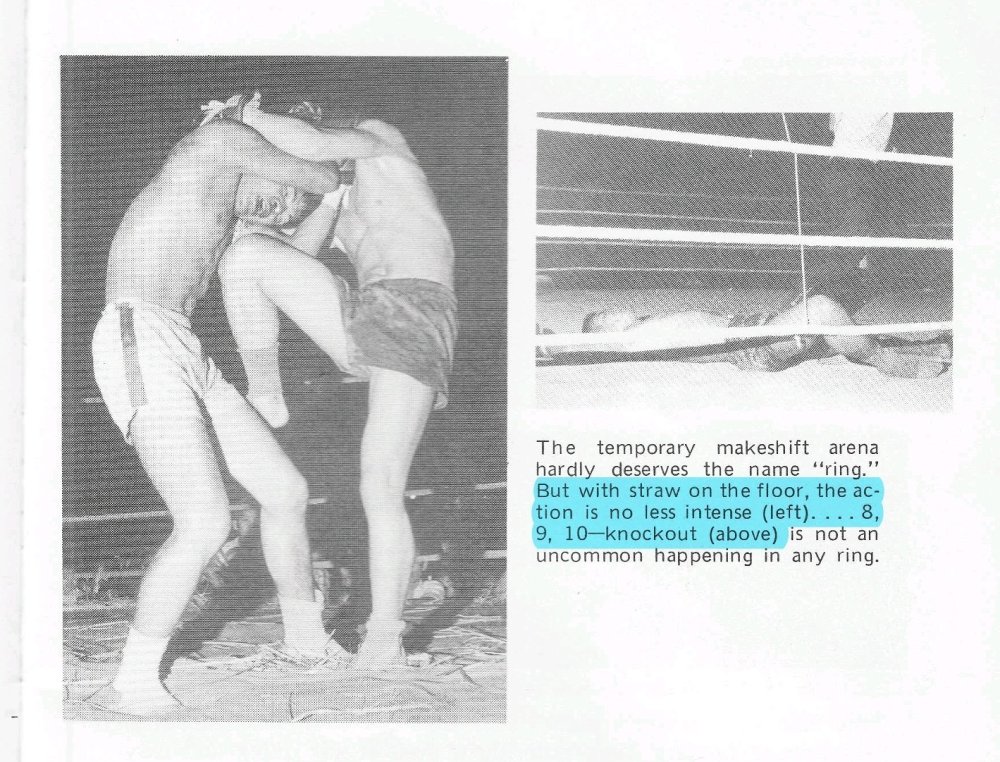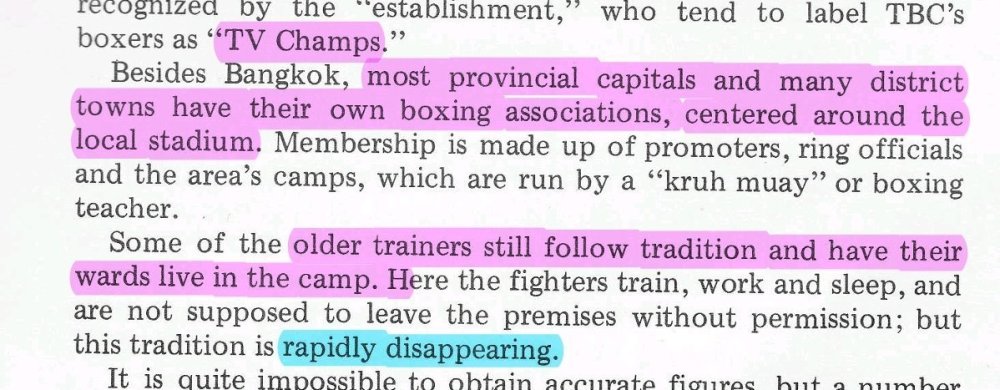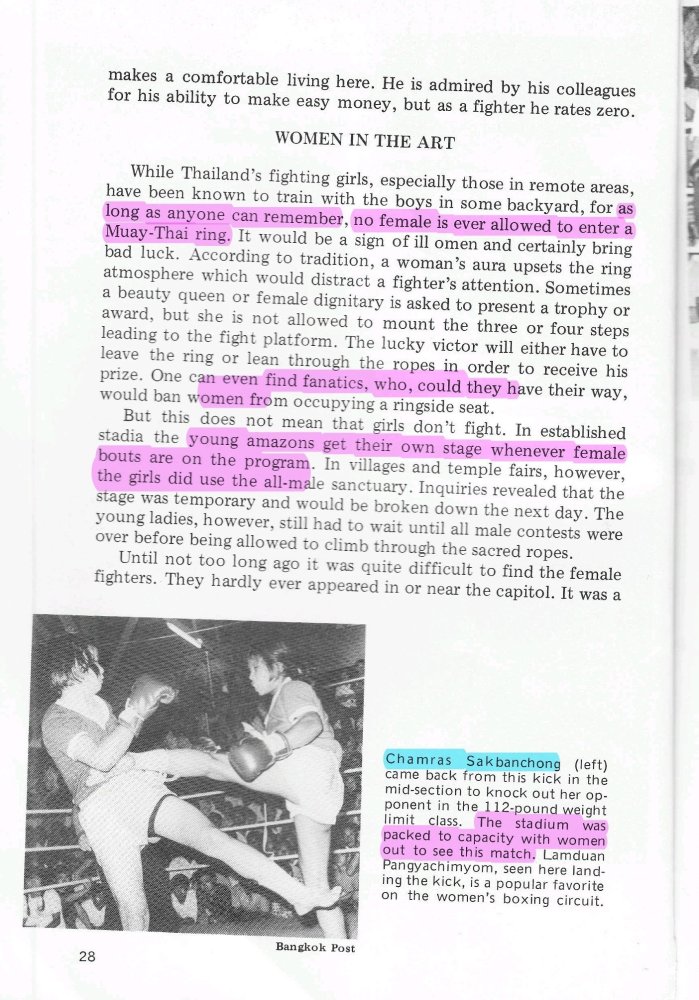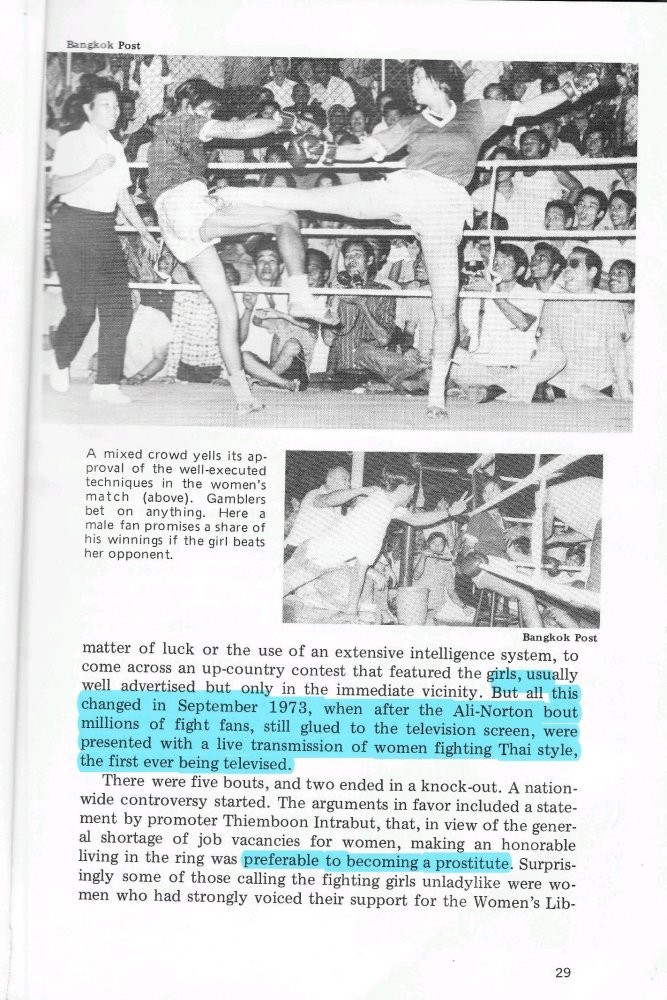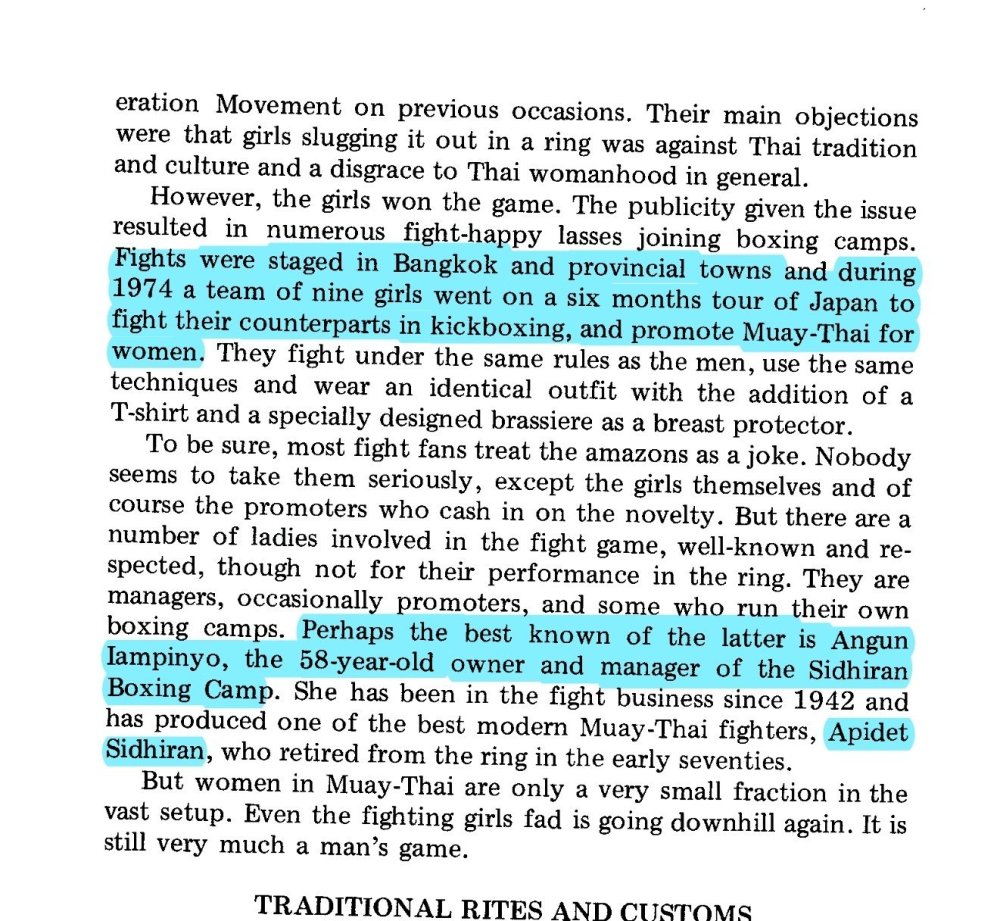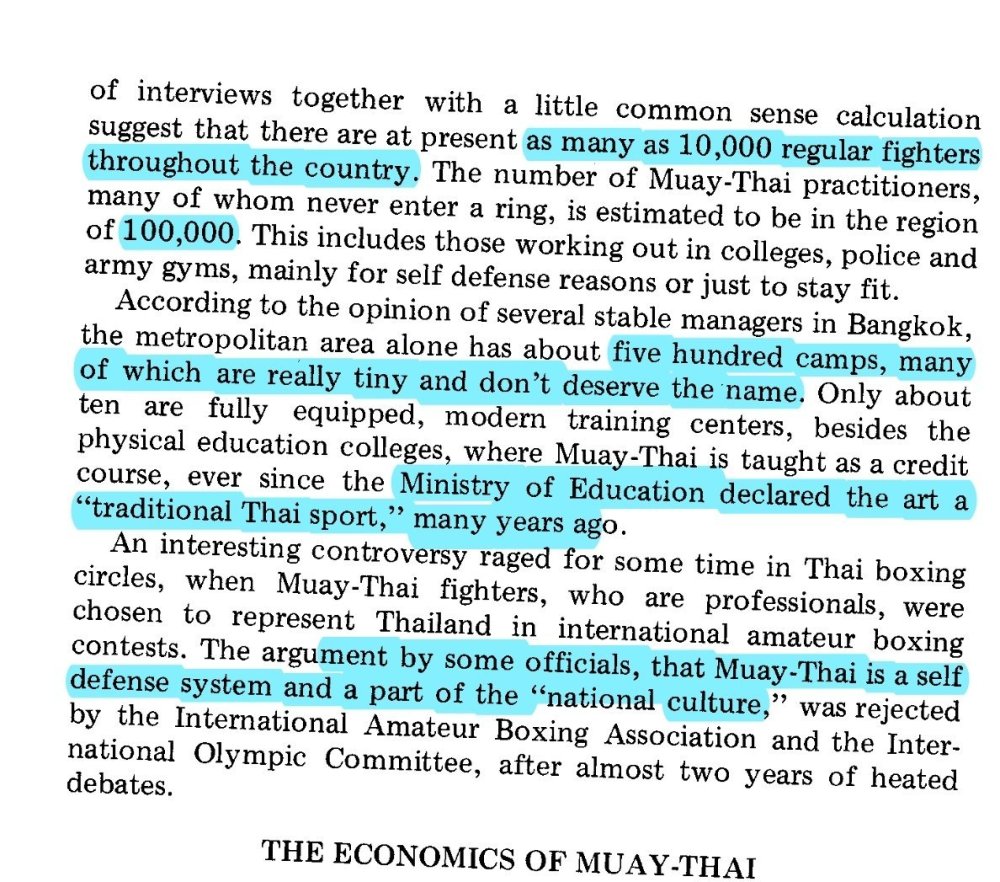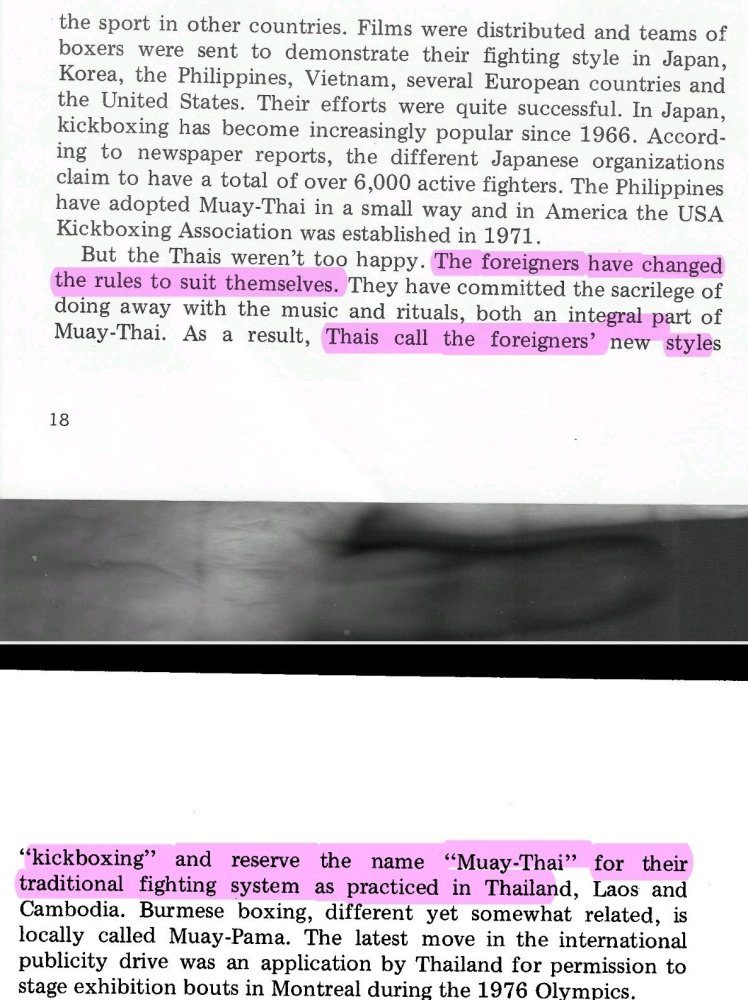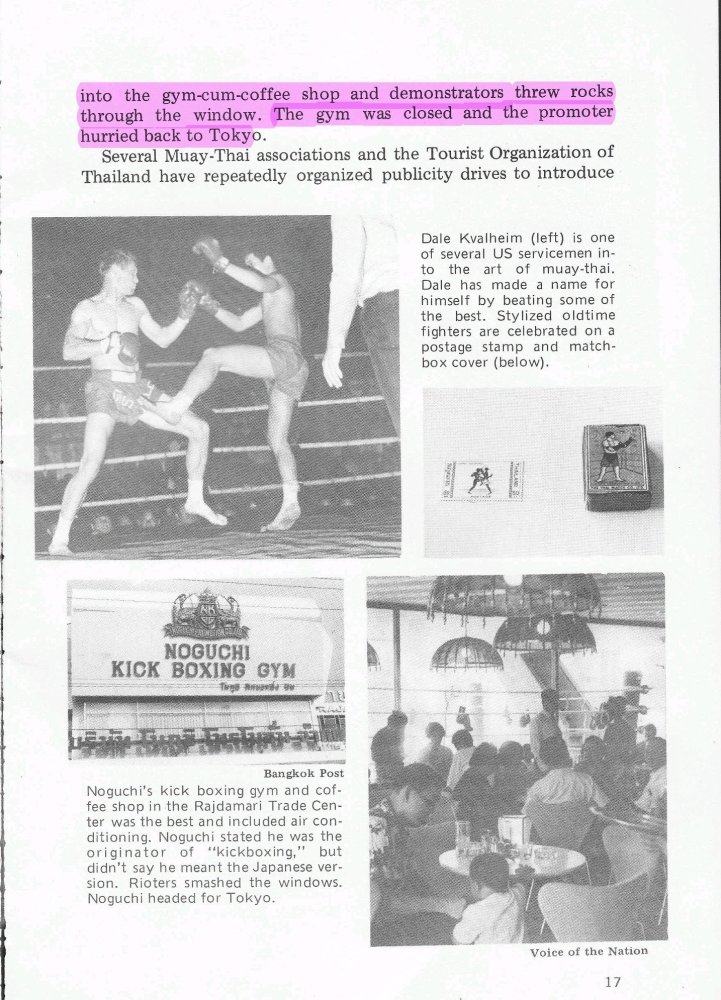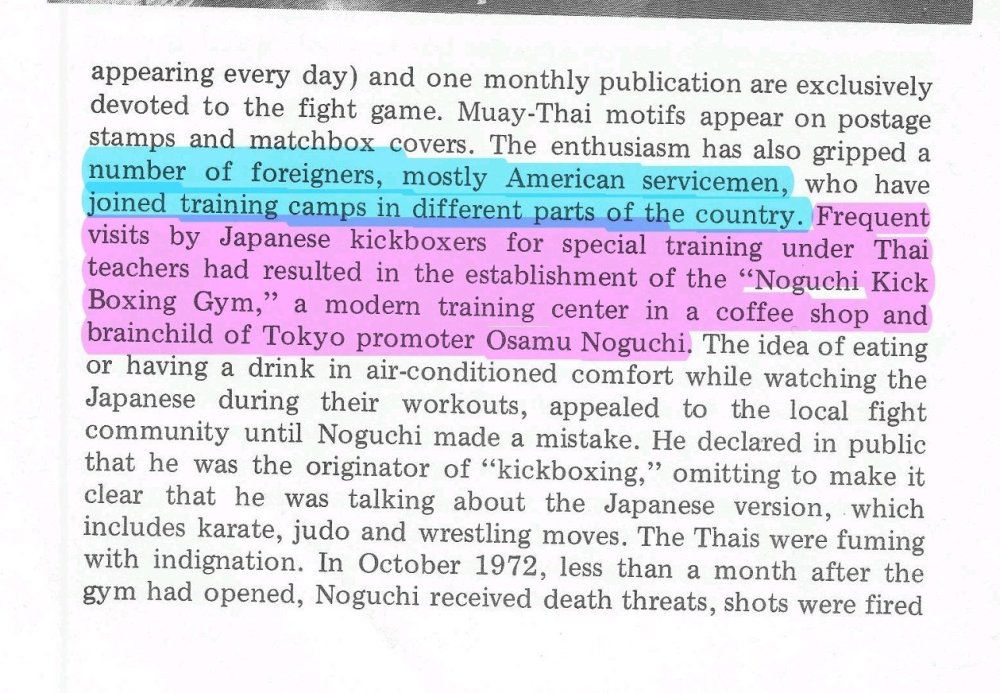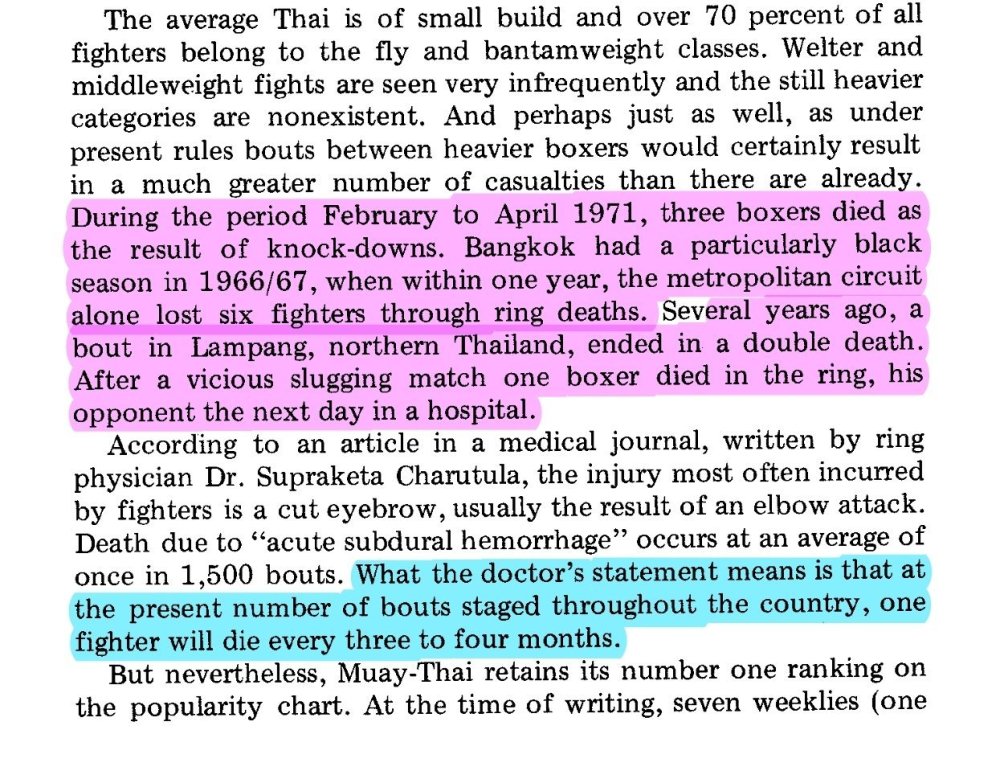Leaderboard
Popular Content
Showing content with the highest reputation on 11/07/2024 in all areas
-
4 More Deep Black Portraits in the Series These photos, other than that of Chatchai, have more light than the those of Ajran Surat and Takrowlek, I'd like to keep the style very dark, but I'm just exploring now, and those of Dieselnoi, Karuhat and Kongtoranee are very beautiful. I'm not sure of where I'll go with this, if I want consistent lighting characteristics, or a landscape of differences between men. Chatchai Dieselnoi Kongtoranee Karuhat1 point
-
This is inaccurate, as we have video evidence and first hand report that rope grabbing was permitted in the major Bangkok stadia, perhaps until the early 80's. It casts a bit of doubt perhaps on the author's other detailed descriptions? Edit in: here we go a little later. I don't know, it seemed common enough to be deployed as an actual tactic. Not sure where he source on official rules is. Even by 1990 all fighters didn't know rope grabbing was illegal.1 point
-
This is hard to guess at. He wants to really push the hyper violence for his readers, and claims to have watched thousands of fights...often both covered in blood, and no progressive nature seems quite fantastic. A short while later he emphasizes knockouts, but not sure what the grammar is here? 8, 9, 10 knockouts per card? Or is he imitating a 10 count?1 point
-
Women in Muay Thai I've read a lot of the history of women fighting in Thailand (there isn't a lot of it on record, but I've probably read everything in English) and this is one of the most substantive reports pre-2000s. There was rumor (reported in a documentary) that women actually briefly fought in a secondary ring in the 80s-1990s (?) at Lumpinee, but I've found no collaboration. This report below seems to be quite from afar (little in person awareness) and combined with varying degrees of sexism you might expect from an American serviceman in Thailand in the 70s. The story of the Ali vs Norton fight is interesting! (1973), but seems also dubious, or only partial in detail. There were, as far as I know, no National televised broadcasts until 1988, so I'm not sure where this was televised...or if it was on tape. And it seems pretty unlikely that someone would follow up the Ali v Norton fight with 5 female bouts (???). But, maybe there is some truth to it, maybe a taped broadcast on a local channel, someone trying to promote female fighting? Also, finally I have the source for the very sexist/racist comment I heard from a well known American Muay Thai coach whose female fighter beat a Thai female fighter, somewhat outrageously claiming that female Thai fighters were just in the ring to avoid prostitution. Well, I guess they read this book. Here though, it comes from a paternalistic Thai who is saying that fighting gives women an alternative to prostitution, trying to make an argument for the moral improvement of Muay Thai, an argument that is made for young male fighters as well (keeping them off drugs, or out of gangs). Who knows about the relevance of this polemical claim, but that fact that it traveled 30 years at least to the mouth of an American Muay Thai coach is disheartening, and just shows how exoticizing and demeaning the picture some Westerners keep of Thailand. Most interesting, perhaps in the broad brush, is the idea that female Muay Thai fighting was popular in local scenes, and that its National interest may have been something that came and went, possibly for decades and decades. But women have been fighting in Thailand, in rings, for over 200 years. It's a shame that so many do not credit them with their own National art and excellence. First recorded female fight 1809 First Photographed Female Muay Thai fight 19291 point
-
The First Japanese Kickboxing Invasion: Noguchi Gym 1972 This is just one of the most fascinating events in the history of the sport, the father of Japanese Kickboxing driven out of the country, and forced to close his very posh Bangkok Kickboxing/Muay Thai gym in 1972, under threats of violence. It seems that at least some Thais felt like he, or the Japanese were trying to steal Muay Thai from Thailand. At this point, I believe, Japanese Kickboxing already had imitated Muay Thai in Japan and even became a regularly televised show of great popularity. Anti-Japanese sentiments seems to be running high. Also so interesting just how fancy a place the gym was, with serious money behind it. I'm guessing this was maybe the first "hi-so" kind of gym in all of Thailand. What is so extraordinary about it all of course is that Lumpinee (and even Rajadamnern) stadia, the National Stadia, 50 years later have radically altered the rules of Muay Thai to more approximate Kickboxing, and steered promotional Muay Thai to the foreign fighter. Just a month or two ago a Japanese Kickboxer was defending the Rajadamnern title, in Rajadamnern, having never fought in Thailand itself. Noguchi was very far ahead of his time. In a small, but interesting family detail in Japanese vs Thai relations, Osamu's brother was the boxer Kyo Noguchi who fought the great Thai fighter Pone Kingpetch, Thailand's first World Boxing champion for his belt: "On May 30, 1962, Noguchi challenged Pone Kingpetch for the flyweight world championship, but Noguchi lost by unanimous decision."1 point
-
The accuracy of the death numbers are hard to gauge. The author would like to present Muay Thai as exotic and dangerous, but there seems to be no likely falsification with 6 ring deaths in Bangkok in 1966. Perhaps rumor (10 years back). The doctor's numbers seem exaggerated, perhaps the first of upper class objection to low class barbarism...something that today shows itself in CTE concerns. But, perhaps Muay Thai in the late 60s was more deadly. It could be that the very small gloves (in photos they can look like oven mitts) contributed to this. In anecdotal support of possible deadliness the late Sirimongkol told us the story of how he accidentally killed a man when fighting as a teen in the provinces in the late 1960s, before he got to Bangkok, in this interview:1 point
Footer title
This content can be configured within your theme settings in your ACP. You can add any HTML including images, paragraphs and lists.
Footer title
This content can be configured within your theme settings in your ACP. You can add any HTML including images, paragraphs and lists.
Footer title
This content can be configured within your theme settings in your ACP. You can add any HTML including images, paragraphs and lists.
